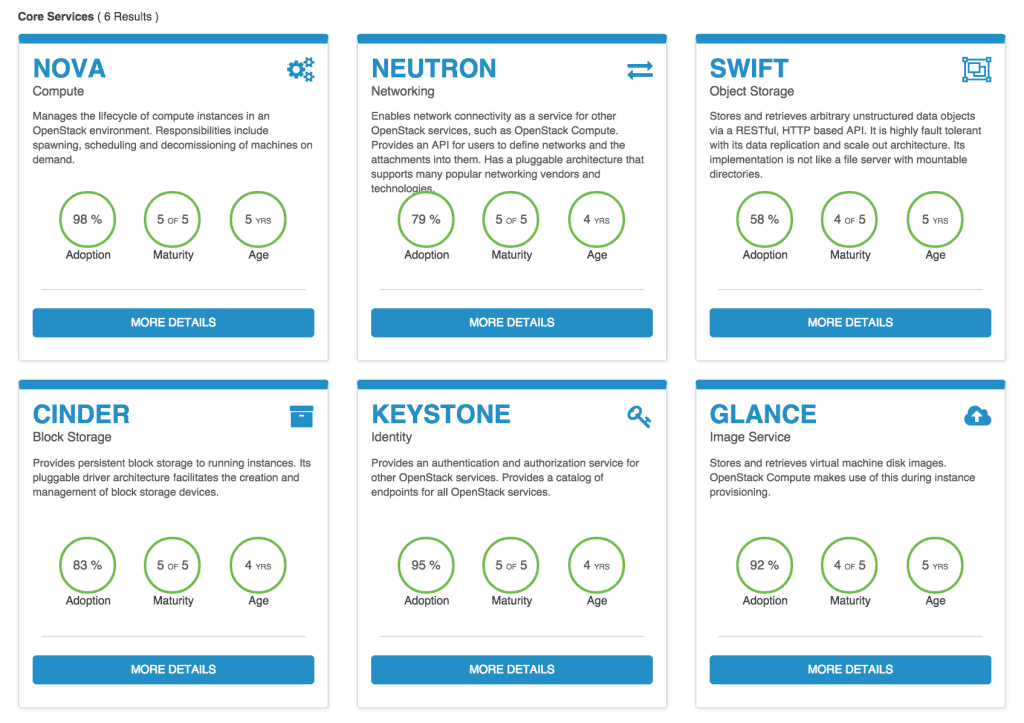OpenStack is about life, liberty, and the pursuit of happiness for the cloud! OpenStack has rapidly evolved since its inception in 2010. In the last 5 years we’ve seen lots of changes from features and functionality to nomenclature and governance. There was much discussion earlier this year at the Liberty design summit in Vancouver about some of the changes being made, so let’s take a look at the current state of the stack as of the most recent release, Liberty.
Core Services
If you’ve been around OpenStack for a while, or you’re reading older material, you’re used to hearing about things like projects and programs in reference to each OpenStack component. Now, OpenStack begins with six core services, all of which have been around for quite some time. In order to help navigate the world of OpenStack, the OpenStack foundation has introduced something called the Project Navigator on the OpenStack.org web site. The Core Services are exactly that, things we’re used to dealing with with an OpenStack deployment. The Core Services are Nova, Neutron, Swift, Cinder, Keystone, and Glance.
(The Core Services on the OpenStack Project Navigator)
One thing you’ll notice in the Core Services is their maturity rating. Many of the Core Services have been around since the beginning of OpenStack, if you click on More Details, you can get stats on contributions to the project, plus install guides and links to the project’s wiki page for further information, project age, and frequency of releases. Besides the maturity rating, there’s also the adoption rate, telling you what percentage of OpenStack deployments use this project, and the project’s age.
Optional Services
Next we have the optional services. While they aren’t things you necessarily need to get OpenStack up and running, lots of time they tend to come in very handy. Many of them are also much mess mature than the core services. You can get the same type of information on the optional services as the core services by clicking more details. The Optional Services are Horizon, Trove, Sahara, Heat, Ceilometer, Zaquar, Ironic, Barbican, and Designate.
What About Everything Else?
There are many, many other components out there which can be utilized in an OpenStack deployment, at varying maturity levels. This was one of the driving forces in changing the model OpenStack projects follow once again. By narrowing focus on Core and Optional Services, focus on stability and enhancements can be driven further on these components as OpenStack grows up and starts appearing in the enterprise. One of the best ways to take a look at all of the other OpenStack projects is by looking at the OpenStack Projects Team page on the OpenStack documentation site.
If you’re new to OpenStack, spending some time clicking around on the new Project Navigator page is a great way to get a feel for many of the most commonly used OpenStack components and more information about them all. The world of OpenStack is constantly changing and evolving, and the Project Navigator is a great way to keep up with the current state of the Core and Optional Services within OpenStack.

Melissa is an Independent Technology Analyst & Content Creator, focused on IT infrastructure and information security. She is a VMware Certified Design Expert (VCDX-236) and has spent her career focused on the full IT infrastructure stack.

